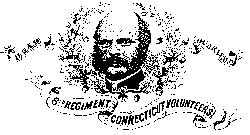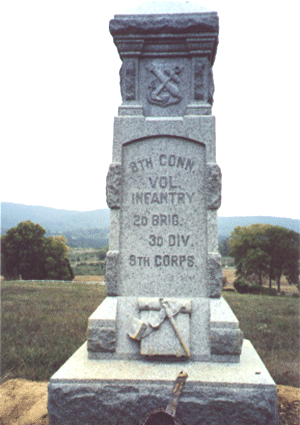



| United States Volunteers |
| 3d Battalion |
| Antietam 140th Anniversary Reenactment |
| portraying |
| The Eighth Regiment Connecticut Volunteers |

 |  |
| Eighth Conn Vols Monument facing towards Harpers Ferry Road |
Eighth Conn Vols Monument facing back towards Antietam Creek |
